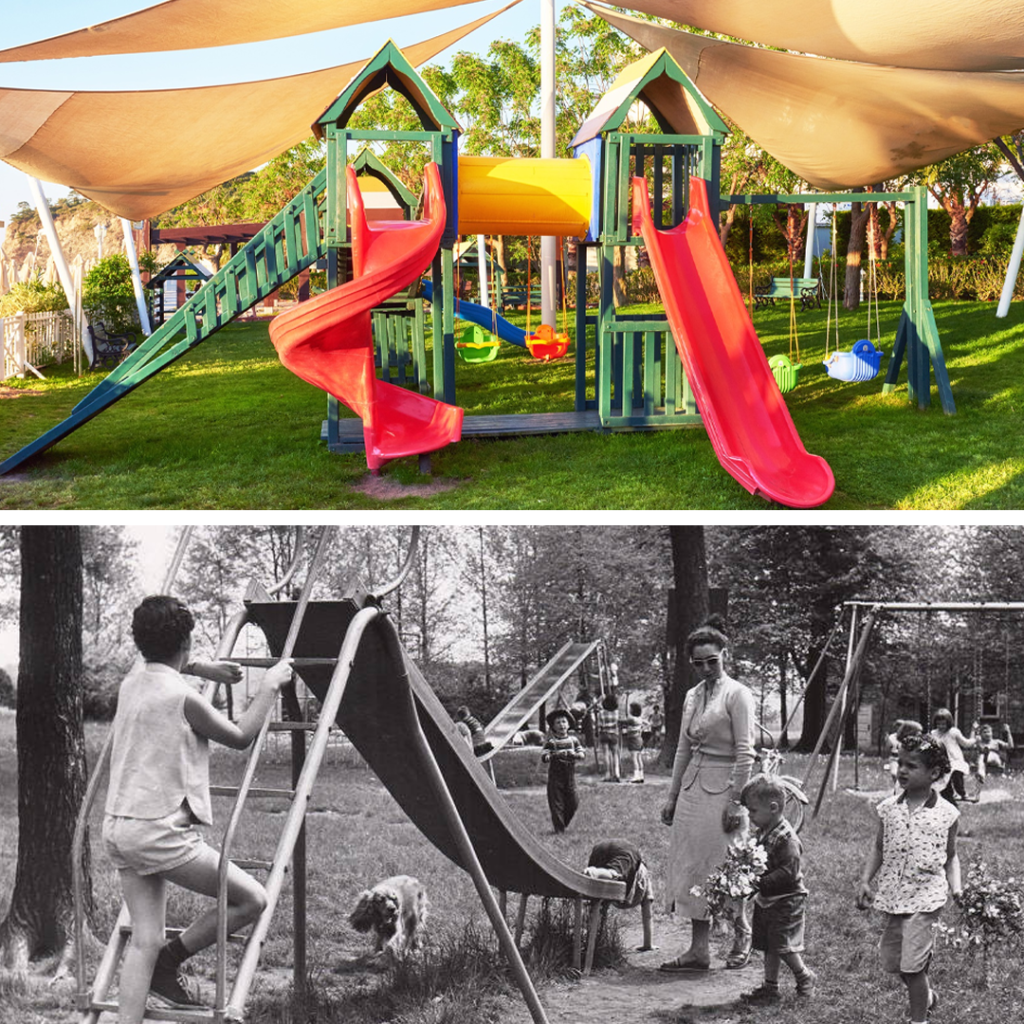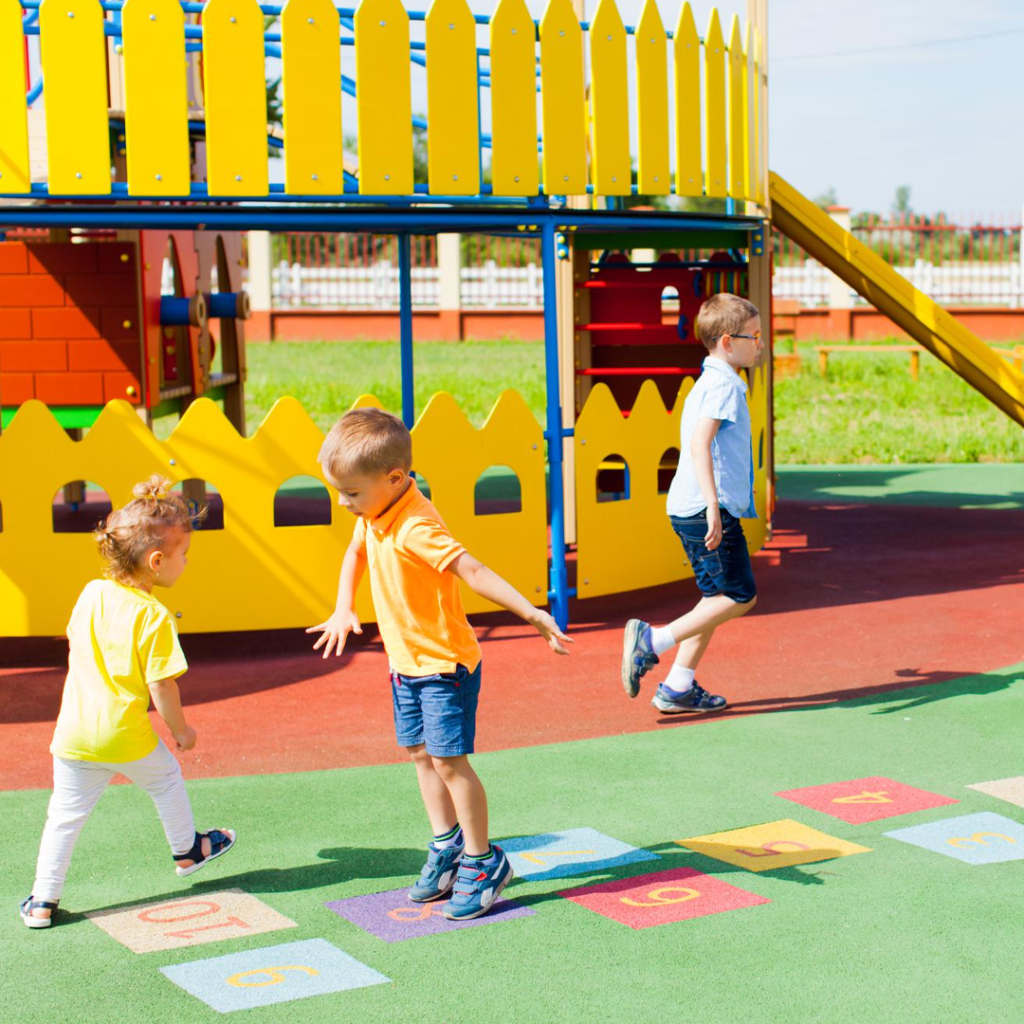
Gardens in Britain have always been places where kids have a great time with swings and slides. But guess what? There’s much more to these play areas than just the usual stuff. This article explores how gardens in the UK have changed over time. We want to show you that they’re not just about swing and slide but are incredible places that reflect how our society has changed, how we’ve come up with new ideas, and how we look at play more completely.
In this beginning, we’ll quickly talk about the history of gardens in Britain. By doing this, we’re getting ready to understand all the different things that make up today’s gardens.
So, get ready to explore with us! We’re going on a journey to see how gardens in Britain have evolved into exciting places full of surprises.
Modern Trends in Garden Design
In today’s world of garden design, people are creating gardens that are useful, environmentally friendly, and aesthetically pleasing. These new styles not only change how outdoor areas look but also promote a complete and environmentally conscious way of living in gardens. Let’s explore some important trends in shaping modern gardens, with a special focus on how trampolines are being cleverly included:

Trampoline Integration:
The integration of trampolines into garden spaces is a contemporary trend that goes beyond mere recreation. By designating a specific area for recreational activities with a trampoline as a centrepiece, gardens become dynamic spaces that cater to family fun and exercise. Safety measures, thoughtful landscaping, and functional lighting around the trampoline ensure that it seamlessly becomes an integral part of the overall modern garden experience. This inclusion not only adds a playful element but also promotes an active lifestyle within the context of a sophisticated and contemporary aesthetic.
Sustainable Landscaping:
The idea of sustainability is a guiding principle in garden design, giving importance to native plants, efficient irrigation systems, and the use of eco-friendly materials. This trend connects gardens with wider environmental concerns, creating visually appealing and ecologically responsible landscapes.
Outdoor Retreats:
Gardens are transforming into extensions of the home, featuring outdoor retreats equipped with comfortable seating, fire pits, and entertainment areas. This trend encourages an outdoor lifestyle, blurring the boundaries between indoor and outdoor spaces and fostering a sense of relaxation and social cohesion.
Vertical Gardening:
As urban spaces become more limited, vertical gardening takes centre stage. Utilising walls, trellises, and other vertical surfaces for plantings maximises space and adds an intriguing visual dimension to garden design.
Smart Garden Technology:
Using technology in gardens is becoming more common. Smart irrigation systems, energy-saving lights, and climate control tech not only make garden care easier but also blend well with the natural beauty of the surroundings.
Challenges and Opportunities in Garden Evolution
Let’s dive into the world of gardens, where exciting changes happen. As we explore today’s gardens, we can’t ignore the challenges they face and the chances to make them even better.
Safety Matters
With new stuff like trampolines and cool gadgets, keeping everyone safe is super important. This point digs into how gardens ensure kids have a great time without worrying about getting hurt.
Balancing Act
Traditional swings and slides are fantastic, right? But what about the newer things like trampolines? Finding the perfect mix is tricky. This point examines how gardens keep the classic fun while adding new and exciting stuff.
Future Fun
What’s next for gardens? This part explores the incredible ideas that might be coming our way. How can we make gardens even more fun and exciting? The future of play is full of possibilities!
As we check out how gardens are evolving in Britain, we’re also looking at their challenges and the incredible things they could do in the future. It’s not just about swing and slide; it’s about making playtime safe, balanced, and ready for whatever comes next.
Garden Fun Bringing Neighbors Together

Let’s talk about how gardens do more than entertain kids. They actually bring neighbourhoods closer! Here’s why:
1. Playful Gatherings:
Gardens are dynamic spaces that attract people of all ages, becoming focal points for spontaneous gatherings. Whether it’s parents watching their children play or groups engaging in impromptu games, these gardens serve as catalysts for creating shared memories and fostering a lively community atmosphere.
2. Team-Building through Play:
The interactive nature of gardens goes beyond individual enjoyment, encouraging teamwork and cooperation. Whether it’s a game of football, collaborative play structures, or group activities, these spaces provide opportunities for individuals to develop social skills and build relationships through shared experiences.
3. Social Hub for Families:
Gardens act as social hubs for families, offering a natural meeting point for parents and children alike. As families gather to enjoy the outdoors, engage in conversations, and supervise their children’s play, these spaces become instrumental in forging connections among residents.
4. Fitness and Well-being:
Beyond the joy of play, gardens contribute to the physical well-being of individuals. The variety of recreational options available encourages exercise and movement, promoting a healthier lifestyle and, in turn, strengthening the communal fabric as people pursue shared health goals.
5. Events and Festivities:
Gardens are versatile spaces that host a myriad of events and festivities. From community picnics and festivals to organized sports events, these gardens serve as the backdrop for communal celebrations, fostering a sense of togetherness and shared joy.
6. Nurturing Friendships:
Children playing in the garden often form lasting friendships, and parents, in their shared supervision roles, find opportunities to connect. The social interactions that unfold in these spaces contribute to the development of a close-knit community, with friendships often extending beyond the boundaries of the garden.
Educational Aspects of Garden

Let’s dive deeper into the exciting world of gardens – they’re not just play zones; they’re like secret classrooms where fun and learning come together:
1. Interactive Learning Hub:
Gardens transform into interactive learning hubs, offering practical educational experiences that extend beyond traditional classroom settings. Through play, children explore fundamental concepts and engage in experiential learning.
2. Flora and Fauna Discovery:
Educational aspects of gardens include hands-on exploration of flora and fauna. Children observe and interact with plants, insects, and birds, fostering an early appreciation for the natural world’s diversity.
3. Sustainability Education:
Gardens serve as platforms for sustainability education. Children learn about eco-friendly practices such as recycling, water conservation, and the importance of caring for the environment in a playful and accessible manner.
4. Scientific Curiosity:
Children’s natural curiosity is nurtured in gardens, encouraging them to ask questions and explore scientific concepts. Through simple experiments and observations, they develop an early interest in scientific inquiry.
5. Environmental Awareness:
Educational gardens promote environmental awareness, instilling a sense of responsibility for the Earth. Children grasp the significance of preserving nature and how their actions, even in play, contribute to a healthier planet.
6. Healthy Living Lessons:
Gardens provide opportunities for teaching children about healthy living. Exploring the origins of food, understanding the benefits of fruits and vegetables, and promoting an active lifestyle contribute to early lessons in nutrition and well-being.
Ultimately, today’s gardens are not just about play – they’re dynamic spaces where every swing, slide, and game is a chance to discover, create, and learn. It’s a new-age garden revolution celebrating the joy of learning through play!
Conclusion
So, there you have it—the garden story from the old swings to the cool, new places we have today. Gardens aren’t just about swings and slides anymore; they’re like magical worlds where you can bounce on trampolines, learn cool stuff, and make friends.
We faced challenges, like ensuring everyone stayed safe while having fun and figuring out how to mix the old garden fun with new ideas. But guess what? The gardens are getting even better!
Now, they’re not just spots for kids; they’re like the heart of our neighbourhoods. Everyone joins in, plays, and learns together. It’s not just play; it’s a big adventure that brings us all closer.
So, here’s to gardens—where laughter, learning, and friendship never end! Get ready for more surprises because the garden adventure is just beginning!
A children’s park aims to provide a safe and engaging space for recreational activities, fostering physical, social, and cognitive development. It aims to offer a diverse range of play opportunities for children.
Children’s parks have a rich history, from early gardens in the 19th century to modern, inclusive spaces. The focus shifted towards creating environments that promote both fun and learning for children.
Garden swings have a long history, dating back to ancient times. However, the modern concept emerged in the 20th century with the development of safer materials. Swings have since become a staple in garden design.
A traditional garden game in the UK is “British Bulldog.” In this game, players attempt to run from one safe zone to another without being tagged by the “Bulldogs.” It’s a classic and energetic outdoor activity.
The British garden standard is outlined in BS EN 1176 and BS EN 1177. These standards specify safety requirements and test methods, ensuring that gardens meet rigorous criteria for equipment design and impact-absorbing surfaces.





